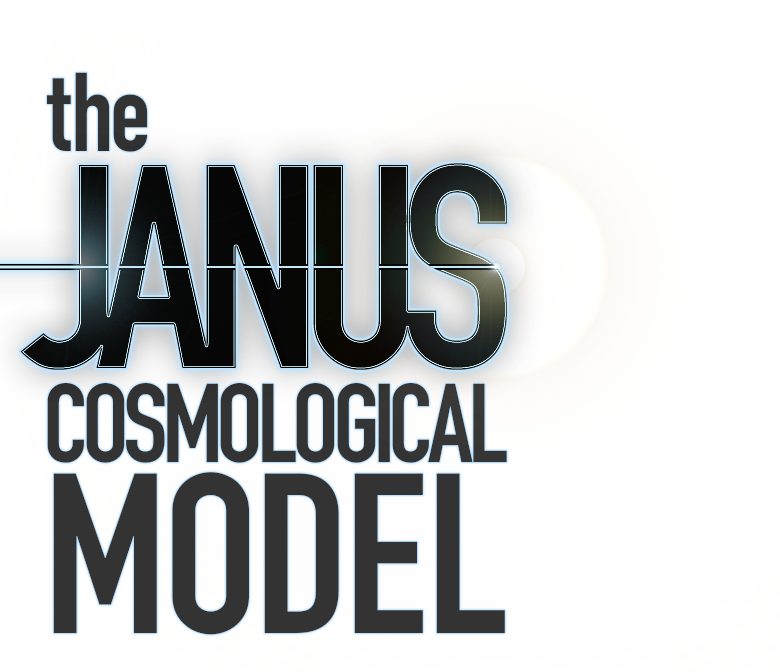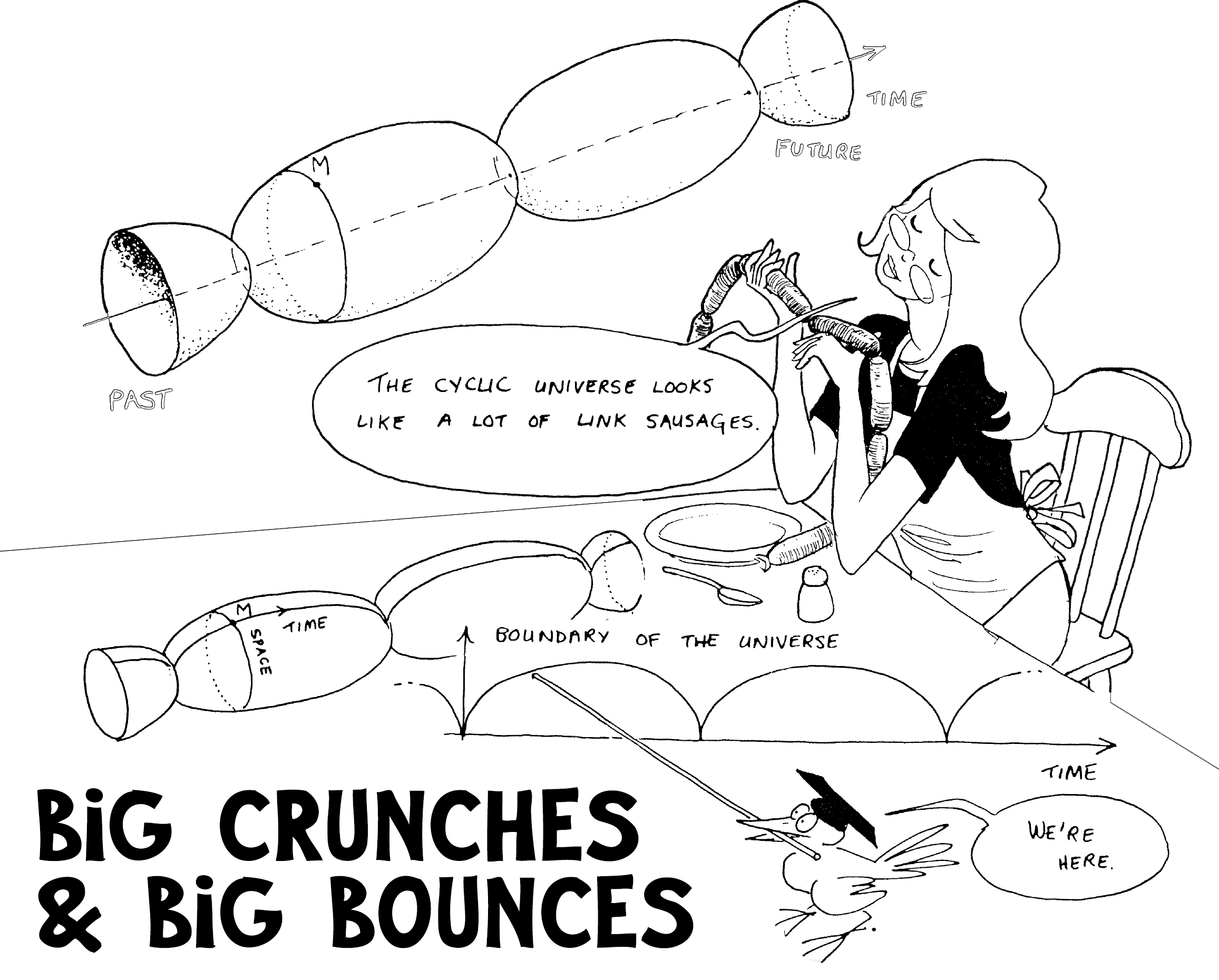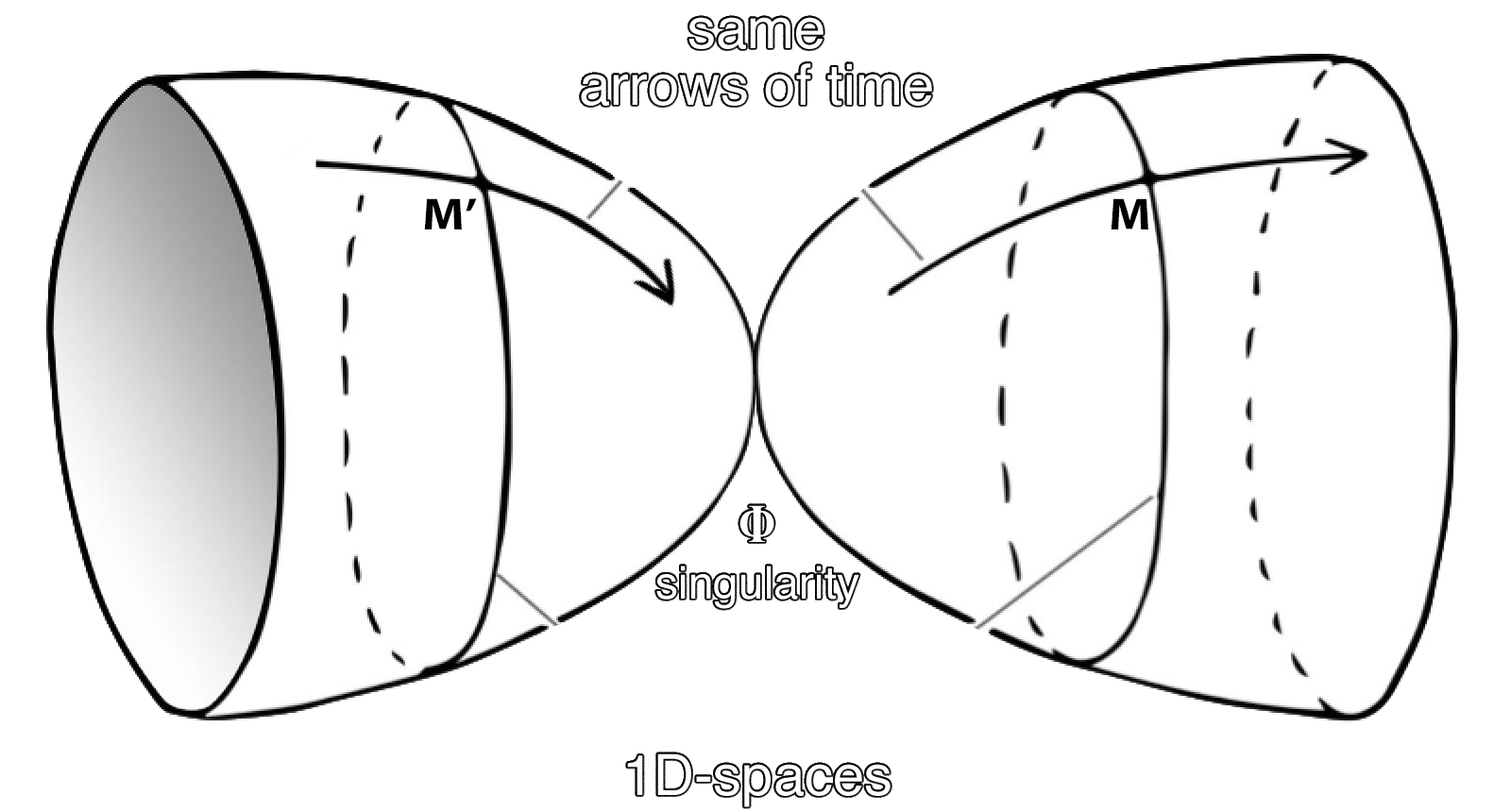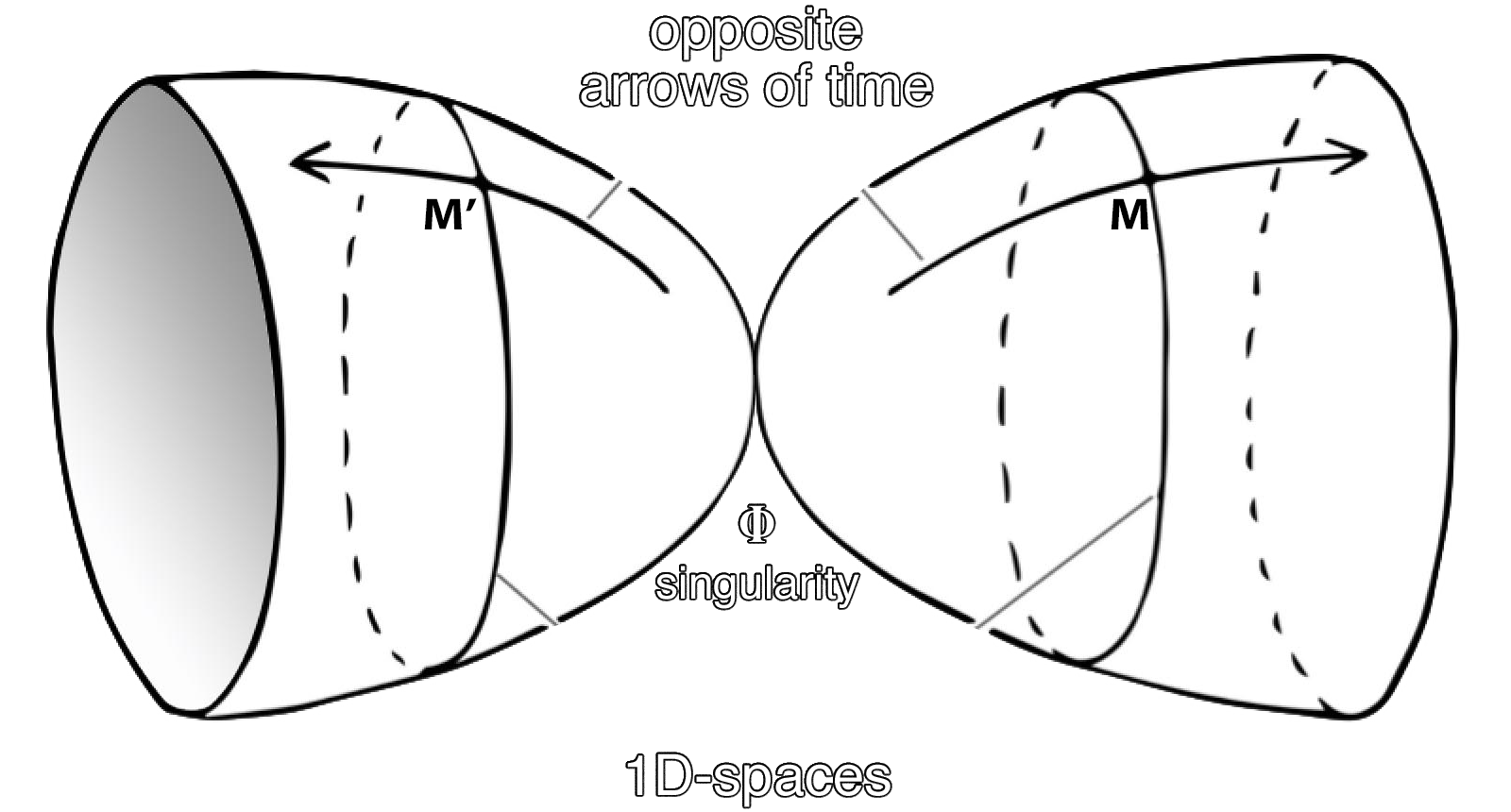How to reverse the arrow of time
Minimum or maximum entropy?
In the 1970s, British physicist Stephen Hawking wrote about the reversal of time's arrow, claiming it could happen in a very dense point of maximal entropy, i.e. in the hot model of the Big Bang.
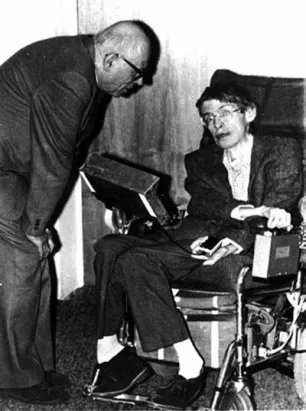 Sakharov did not agree with this view and disproved Hawking when they both met at the International Seminar on Quantum Gravity, Moscow, in May 1987.
Sakharov did not agree with this view and disproved Hawking when they both met at the International Seminar on Quantum Gravity, Moscow, in May 1987.
Sakharov explained to Hawking that entropy always grows with time (both are directly related) and that the arrow of time can reverse only if entropy reaches a minimal state, i.e. zero. Hawking was forced to agree with Sakharov's demonstration. You can read the complete story in this article.
For this reason, Sakharov advocated for a "cold model" of the Big Bang after this idea, since an initial singularity with no particle motion would enable the CPT reflections of his twin universe model.
Sakharov also showed that the arrow of time could reverse a second time in a distant future, when all baryons in the universe would have decayed, reaching another state of minimal entropy.
But Sakharov didn't take into account – neither did Hawking – a variable speed of light. Especially in the very high energy density state right after the Big Bang. This changes everything, as an infinite speed of light allows the reversal of time's arrow when entropy reaches a maximum value, as shown below.
Flipping the light cone upside-down
\( t = 0 \rightarrow c = \infty\)
In the Janus model, going back in time toward the ultra hot dense state of the Big Bang, temperature, entropy, pressure and speed of light all increase to infinity. The light cone and the arrow of time normally look like a Japanese umbrella. As \(c\) increases when we go backwards in the course of events toward the Big Bang, the light cone becomes flatter and flatter, until it becomes a disc at the origin when the speed of light becomes infinite. Then it can reverse like an umbrella blewing inside out in a gust of wind. The "handle of the umbrella", i.e. the arrow of time, then reappears in the opposite direction:
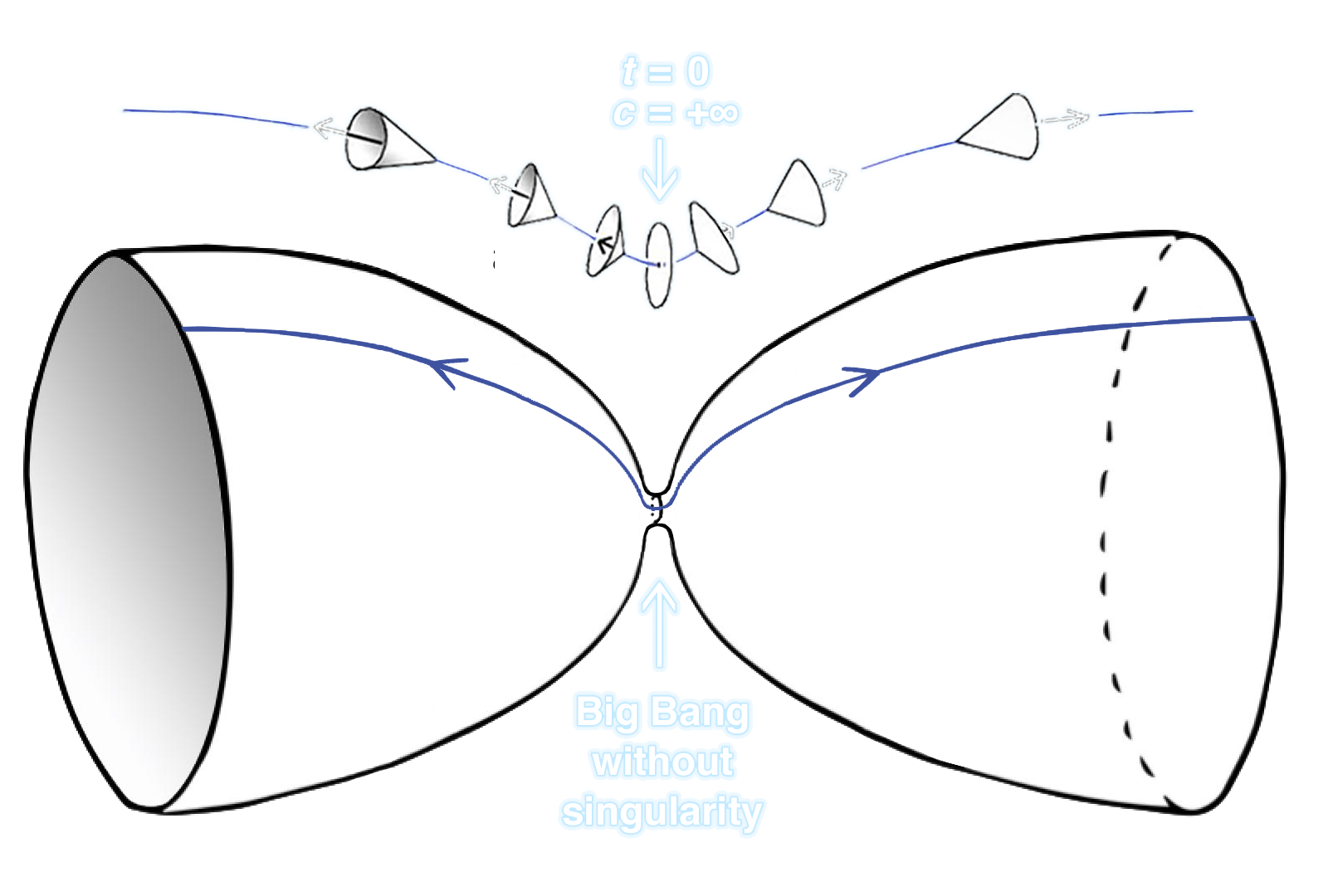
Sakharov considered the Janus point as a "singular point". But there is no need to make this junction point a singularity. In the 2D figure above, the singularity is replaced by a small throat circle (that would become a throat surface in 3D) linking the two spacetimes together, that would still enable CPT symmetry.
How the speed of light vary in the Janus model without breaking the laws of physics will be explained in the next page "Variable Speed of Light" (work in progress).
References
1 Sakharov, A. D. (January 1967):
"Нарушение СР–инвариантности, С–асимметрия и барионная асимметрия Вселенной"
Pi'sma ZhÉTF (in Russian). 5 (1): 32–35.
Translated as:
Sakharov, A. D. (January 1967):
"Violation of CP invariance, C asymmetry, and baryon asymmetry of the universe"
JETP Letters. 5 (1): 24–26.
Republished as:
Sakharov, A. D. (May 1991):
"Violation of CP invariance, C asymmetry, and baryon asymmetry of the universe"
Soviet Physics Uspekhi. 34 (5): 392–393. doi:10.1070/PU1991v034n05ABEH002497.
2
Sakharov, A. D. (September 1980):
"Космологические модели Вселенной с поворотом стрелы времени"
Pi'sma ZhÉTF (in Russian). 79 (3): 689–693.
Translated as:
Sakharov, A. D. (September 1980):
"Cosmological models of the Universe with reversal of time's arrow"
JETP Letters. 52 (3): 349–351.
3
Sakharov, A. D. (October 1982):
"Многолистные модели Вселенной"
Pi'sma ZhÉTF (in Russian). 82 (3): 1233–1240.
Translated as:
Sakharov, A. D. (October 1982):
"Many-sheeted models of the Universe"
JETP. 56 (4): 705–709.
4 Sakharov, A. D. (7 December 1982): Collected Scientific Works. Marcel Dekker / CRC Press. ISBN 978-0824717148.
5 Sakharov, A. D. (1984): Œuvres scientifiques. Economica Anthropos. ISBN 978-2715710900.
6 Carroll, S.; Chen, J. (27 October 2004):
"Spontaneous Inflation and the Origin of the Arrow of Time"
Report Number EFI-2004-33. arXiv:hep-th/0410270.
7 Carroll, Sean (7 January 2010): From Eternity to Here: The Quest for the Ultimate Theory of Time. Dutton Adult. ISBN 978-0525951339.
8 Guth, A. (2014): "Infinite Phase Space and the Two-Headed Arrow of Time" talk at the FQXi (Foundational Questions Institute) conference. YouTube video.
9 Barbour, J.; Koslowski, T.; Mercati, F. (31 October 2014):
"Identification of a Gravitational Arrow of Time"
Physical Review Letters. 113: 181101. doi:10.1103/PhysRevLett.113.181101. arXiv:1409.0917.
10 Barbour, Julian (22 September 2020): The Janus Point: A New Theory of Time. Basic Books. ISBN 978-0465095469.
11 Boyle, L.; Finn, K.; Turok, N. (2018):
"CPT–symmetric universe"
Physical Review Letters. 121: 251301. doi:10.1103/PhysRevLett.121.251301. arXiv:1803.08928.
